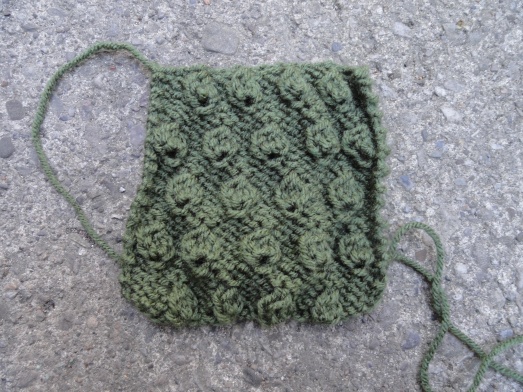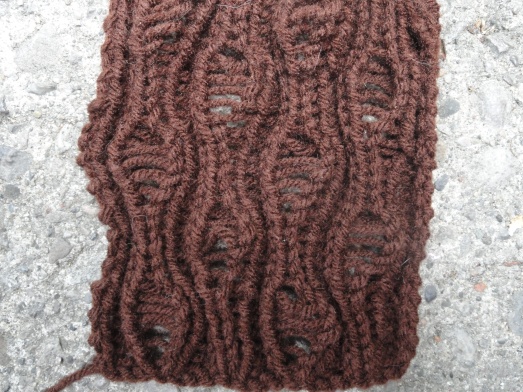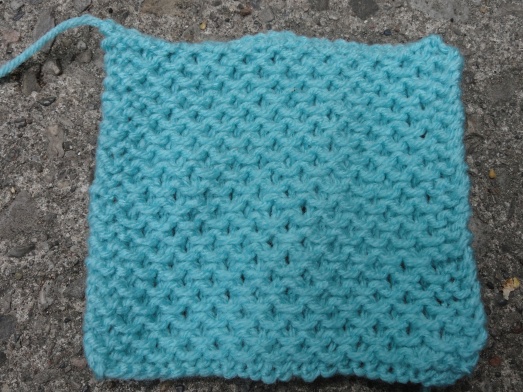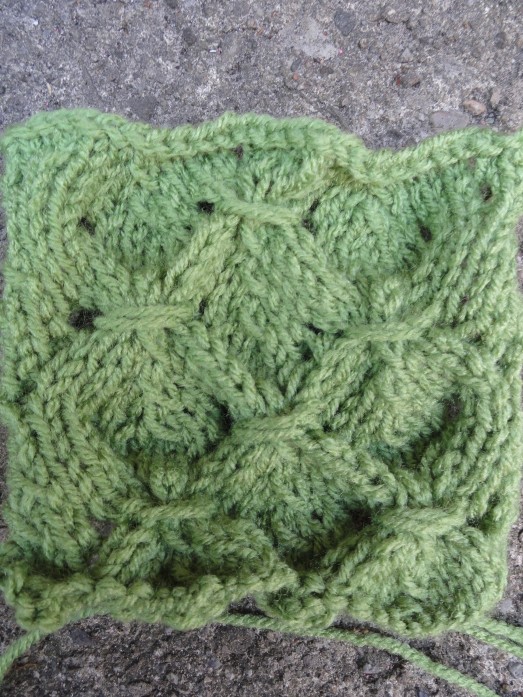I’ve been back at work on the knit sample squares, as in these previous four posts: 1, 2, 3, 4. The book I am following is Margaret Hubert’s “The Complete Photo Guide to Knitting”. I’ve got five more patterns/textures this week, plus a few observations about knitting and this book.
Herringbone
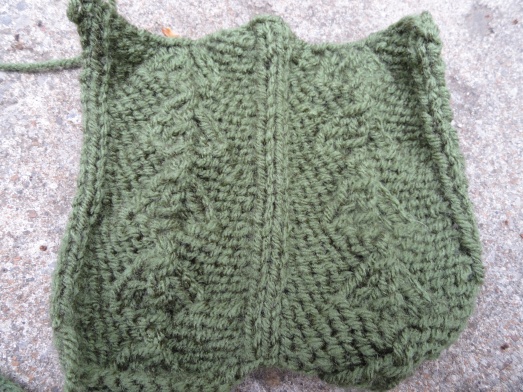

Diagonal Columns
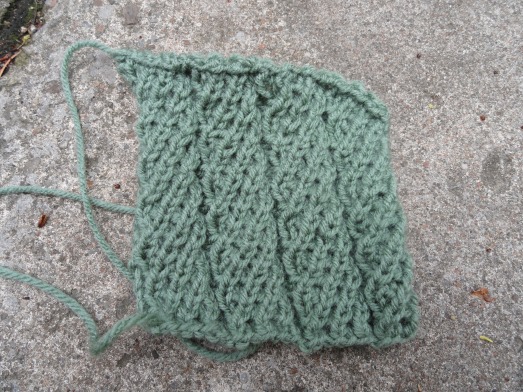

Bells


Basket Weave


Fence Posts


Working on the patterns, I came across a couple of misprints in the book I am using. I’ll share my findings and corrections where I can in case anyone out there is using the same book.
- Page 60 & 61: The picture supplied for “Stockinette Seed Diamonds I” is actually created using the directions for “Stockinette Seed Diamonds II”, and vice versa. The pictures and directions are simply reversed.
- Page 69: The Bells pattern creates the bells by casting on 5 extra stitches to make a three dimensional opening, but only decreases by 4 at the top of each bell. This would create an increase of 1 stitch per bell before the pattern repeats again, which would interfere with the “Cast on a multiple of 8” direction. To fix this, I replaced “Row 10: Knit” with “Row 10: K2 *k3, k2tog, rep from * end k6.
- Page 70 & 71: The directions for “Fence Posts Blocked” and “Fence Posts Not Blocked” are identical. The pictures supplied are only slightly different, with the one on the left (Fence Posts Not Blocked) appearing to have the stockinette lines bend towards the garter ridges a little more.
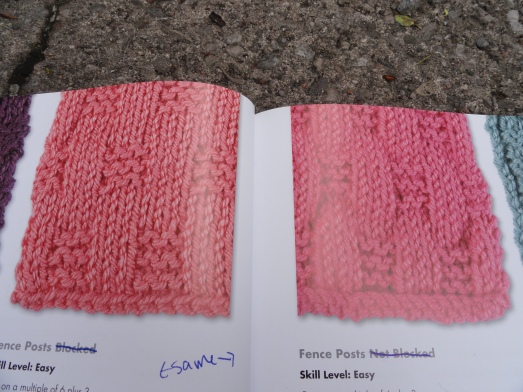


This difference did not seem substantial, so I simply followed the supplied directions, calling the pattern “Fence Posts”. Maybe with some thought I could have puzzled out the change in pattern, but it did not seem important.
As for my personal observations this week, my bind off rows still need some work. I can’t seem to make the tension of the bind off row the same as the rest of the work – usually ending up too long and stretching the work, or too short and squishing the end.


